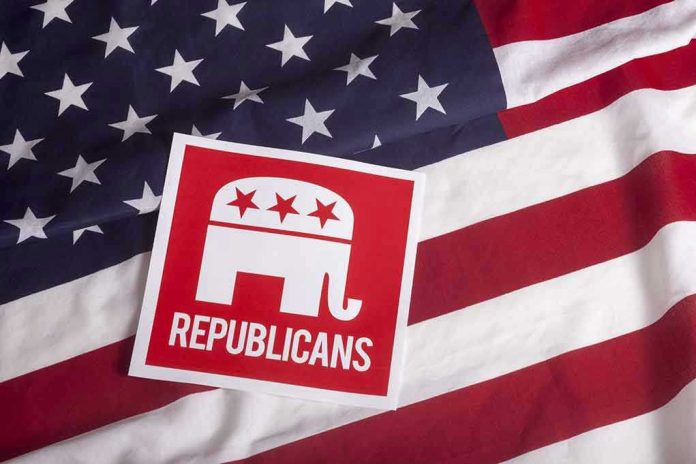
The drama between Ben Shapiro and Marjorie Taylor Greene reveals the deepening fault lines within the MAGA movement.
Story Overview
- Ben Shapiro criticizes Marjorie Taylor Greene, accusing her of victimhood.
- The conflict highlights the fragmentation within the MAGA movement.
- Marjorie Taylor Greene has publicly criticized Trump and GOP leadership.
- Shapiro’s influence in conservative media plays a key role in shaping narratives.
The Public Split
Conservative commentator Ben Shapiro has openly criticized Rep. Marjorie Taylor Greene, accusing her of “playing the victim card” in her ongoing rift with President Donald Trump. This public spat underscores a significant fracture within the MAGA movement, with Greene positioning herself as a dissenting voice against Trump’s leadership and the wider Republican establishment. Shapiro’s criticism comes after Greene’s recent public denouncements of Trump, suggesting her ambitions to create an independent iteration of the MAGA movement.
In late October and early November 2025, Greene amplified her critique of Trump and the GOP, using national platforms to express her discontent. Her critiques ranged from policy decisions to leadership styles, prompting a swift rebuke from Trump. The president accused Greene of losing her way and pandering to Democrats, a charge she promptly refuted, emphasizing her allegiance to “America First” principles. This exchange set the stage for Shapiro’s intervention, where he publicly dissected Greene’s motives and accused her of splintering the movement.
Fragmentation in MAGA
The fallout between Greene and Trump is not merely a personal dispute; it reflects broader tensions within the MAGA-aligned wing of the GOP. As Trump continues to shape the party’s narrative, figures like Greene challenge his dominance, advocating for a revised vision of the movement. These internal conflicts illustrate the fragmentation within the party, with various factions vying for influence and direction. Shapiro’s critique serves as a reminder of the ongoing power struggles and the challenges of maintaining a unified movement under a singular leadership vision.
Shapiro’s role in this discourse is critical. As a prominent conservative voice with a substantial following, his opinions carry weight in shaping the perceptions of right-wing audiences. By calling out Greene, Shapiro positions himself as a defender of Trump-aligned orthodoxy, reinforcing the existing power structures within the movement. This dynamic highlights the influence media figures exert in political discourse, especially when internal party disagreements arise.
Implications and Future Directions
The immediate impact of this dispute is heightened infighting within the MAGA movement, potentially weakening the party’s cohesion ahead of the 2026 midterms. In the long term, these tensions could lead to a realignment of leadership, with new factions emerging and challenging Trump’s dominance. For the Republican Party, navigating these internal conflicts will be crucial in maintaining electoral viability and addressing the broader ideological debates shaping its future.
As Greene continues to assert her vision of “America First,” the coming months will be pivotal in determining the future leadership and direction of the MAGA movement. Will Greene’s challenge lead to a more diversified movement, or will it further entrench existing divisions? These questions remain central as party leaders and media figures grapple with the evolving landscape of conservative politics.
Sources:
Instagram (Shapiro’s monologue)















